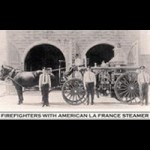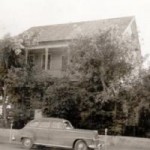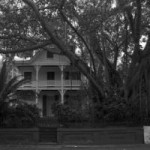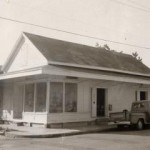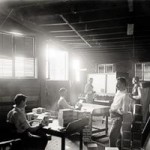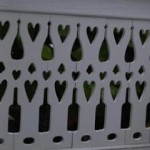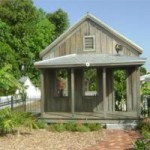Come experience 120 Historic Markers in the Largest Historic District of Frame Buildings in the United States. See photos and listen to the history and stories these buildings have to tell. Take a self-guided tour and discover a little piece of paradise.
Check Out Our YouTube Videos
Fire Station No. 3
Believed to be the oldest active fire station in the State of Florida until 1998. Started with 3 paid employees and 40 volunteers it featured horse drawn steam engines and hose carriages. The station switched to motorized fire engines in 1914. The horse stalls were removed and a concrete hose trough was added behind the building in the 1940’s.
Key West Armory
The Armory was in such an advanced state of deterioration by 1969 that the State granted the City permission for it’s demolition. Joseph Allen and State Representative William Roberts fought to save the building and were instrumental in forming the Historic Preservation Board. Preservationists James Shields, Edward & Joan Knight, Larry Nettler, Mary Lee Graham and Norman Artman are also credited with preserving the structure.
The Patterson-Baldwin House
The single story structure on the back of the house was moved here by Alexander Patterson after the devastating hurricane of 1846. It is believed to be one of the oldest buildings in Key West. Mr. and Mrs. Pinkney lived in the cottage where his sister, Madame Passaloque began the island’s first private schoolhouse in 1847. John Baldwin purchased the property in 1860 enlarging the structure in 1867. The property remained in the Baldwin family for 102 years.
The Cosgrove House
Captain Phillip Cosgrove purchased this stately home for the price of $1,600 in 1871. This was a prime location with its proximity to the deep-water port and in what was then the center of the city. It’s believed that the Captain’s wife Myrtle planted the century old banyan tree, defined by its aerial prop roots, in the front yard for shade. The house remained in his family until 1947.
The Neighborhood Store
This corner building was built as a grocery store for the surrounding area. It was common to find a laundry, drug store, billiard hall, dry goods store, coffee shop, ice cream parlor and bakery in every neighborhood. The stores were informal gathering places where you could see a neighbor and catch up on the latest news and gossip. They played an integral part in the everyday lives of our ancestors.
The Fogarty Mansion
Built in 1887 by Charles Curry, son of William Curry, it's one of the grandest homes built by the Curry children. Dr. Joseph Norman Fogarty purchased the home in 1900 for his bride Corinne, Charles' daughter. Dr. Fogarty served as Mayor of Key West for 6 years and in 1912 held receptions for both President Taft and Henry Flagler, celebrating the completion of the railroad, on his front lawn. 
E.H. Gato Cigar Factory
This is the second Gato cigar factory built on this site. The first structure was a wooden factory built in 1884 and destroyed by fire in 1915. The second factory was built as a hurricane and fire proof structure in 1920. It features large windows and a central open-air courtyard to capture the best light to select premium tobacco leaves. The factory employed 500 cigar artisans and produced sixty thousand hand rolled cigars in 1890. 
Gatoville
Edward H. Gato created one of the first successful industrial communities in the US. By building 40 cigar makers cottages around his cigar factory Gato attracted the most talented workers. The homes were simple two room wooden structures, with a porch facing the street and an outhouse in back. Gato supported the entrepreneurial and community spirit of his workers, encouraging them to start businesses of their own, ranging from groceries and saloons to confectionary shops and private schools.
The Speakeasy
The home was purchased by infamous Prohibition Era rum-runner Raul Vasquez in 1920. During a rum running trip to Cuba Raul brought the elaborately carved balustrade home instead of his usual cargo. The rum and wine bottle balcony fretwork was actually a clever advertisement for “The Florence Clubâ€, Raul’s speakeasy behind the house. When Raul was away an honor system was in place and according to Raul “No one stole a single bottle.â€
The Gato Village Pocket Park
This park was part of a community of 40 cigar makers’ cottages surrounding the Gato Cigar Factory. The structure at the rear of the property is a representation of the cottage that stood here in 1897. The cigar sculpture is believed to be the largest cigar of its type and is a monument to the men and women who made Key West the “cigar capital of the world†in the 1890’s.
